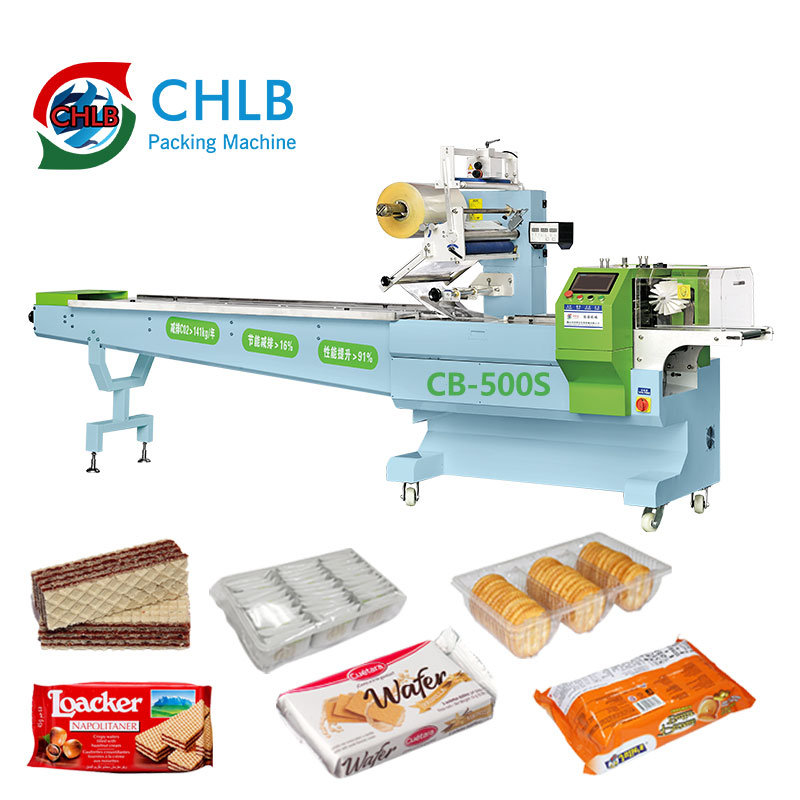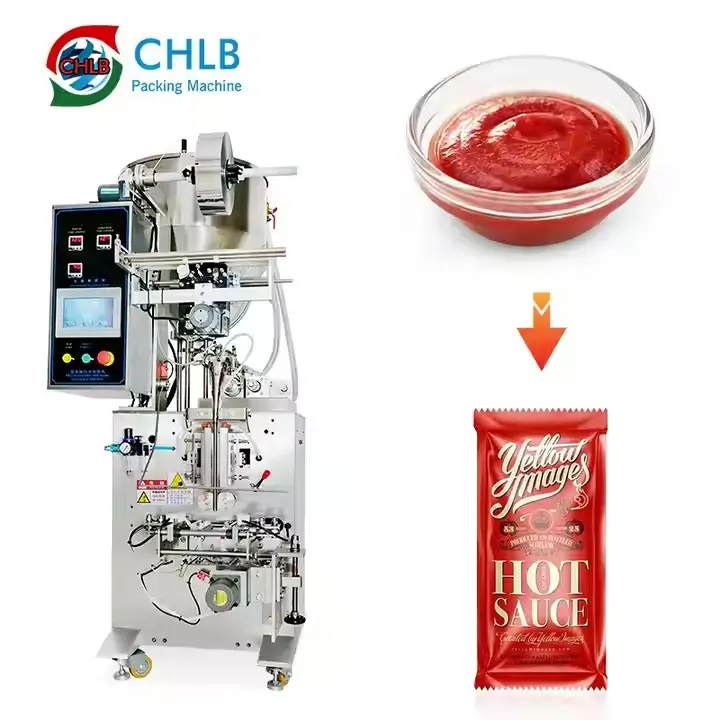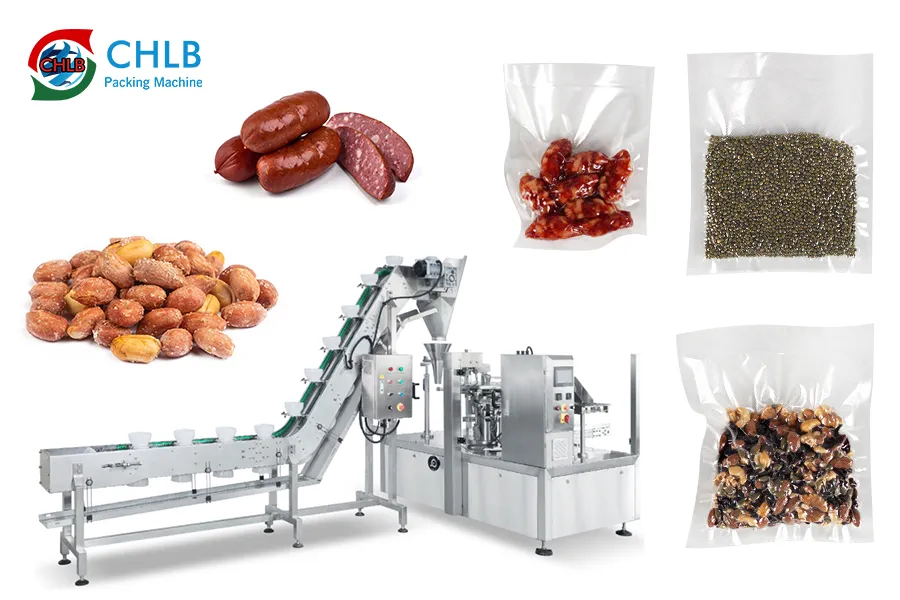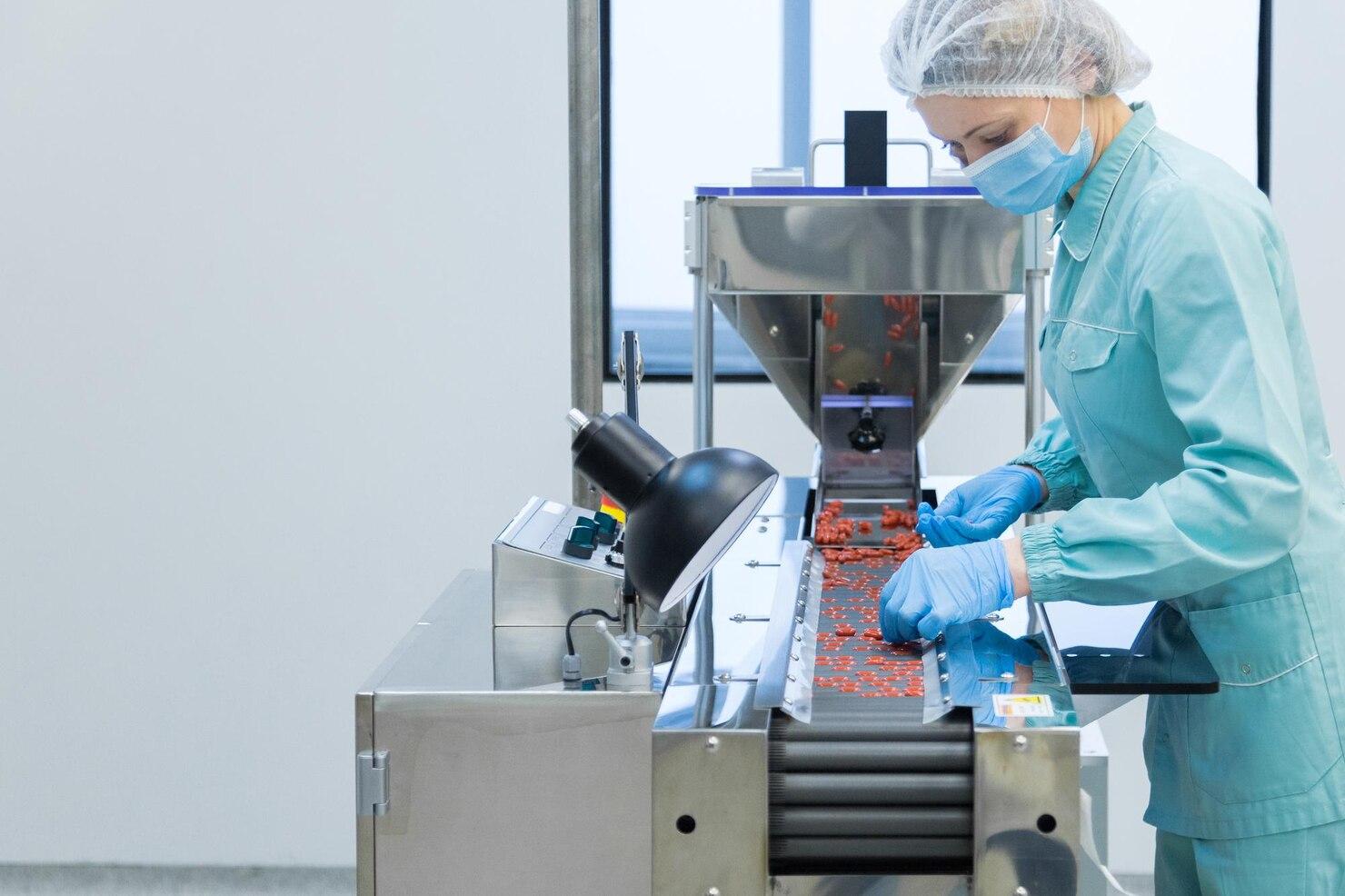Dans le domaine dynamique de l’emballage, efficacité et innovation s'entrelacent pour présenter des solutions adaptées à un marché en constante évolution. Parmi ceux-ci, L'emballage Flow Wrap se distingue comme un emballage polyvalent, méthode rentable qui a révolutionné la présentation et la conservation des produits. Cet article explore les subtilités de l’emballage flow wrap, dévoiler ses bienfaits, candidatures, et les matériaux qui en font un outil indispensable dans la fabrication moderne.
Qu'est-ce que l'emballage Flow Wrap?
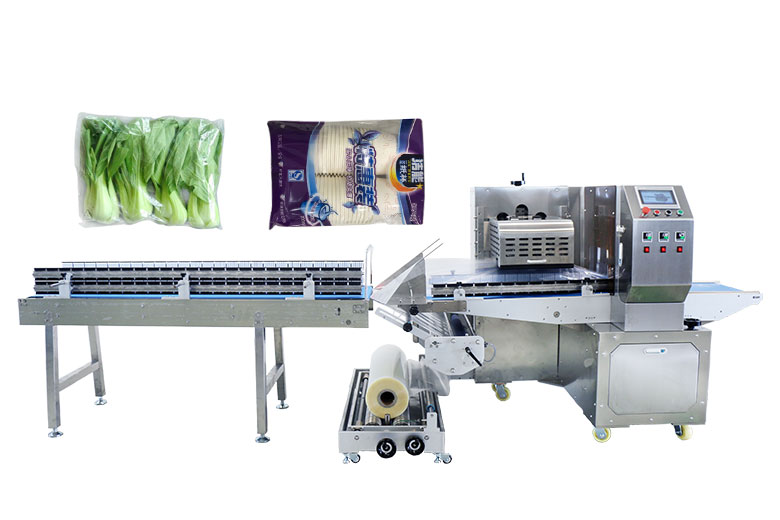
Emballage Flow Wrap, également connu sous le nom de form-fill-seal horizontal (HFFS), est un procédé d'emballage dans lequel les produits sont enveloppés dans un film continu de plastique ou d'autres matériaux, puis scellé et coupé en unités individuelles. Cette méthode se caractérise par son fonctionnement à grande vitesse et son adaptabilité à diverses formes et tailles de produits.. De la confiserie à matériel, L'emballage Flow Wrap garantit que les produits sont bien emballés., améliorant à la fois leur attrait en rayon et leur protection.
Comment fonctionne la machine d'emballage par flux?
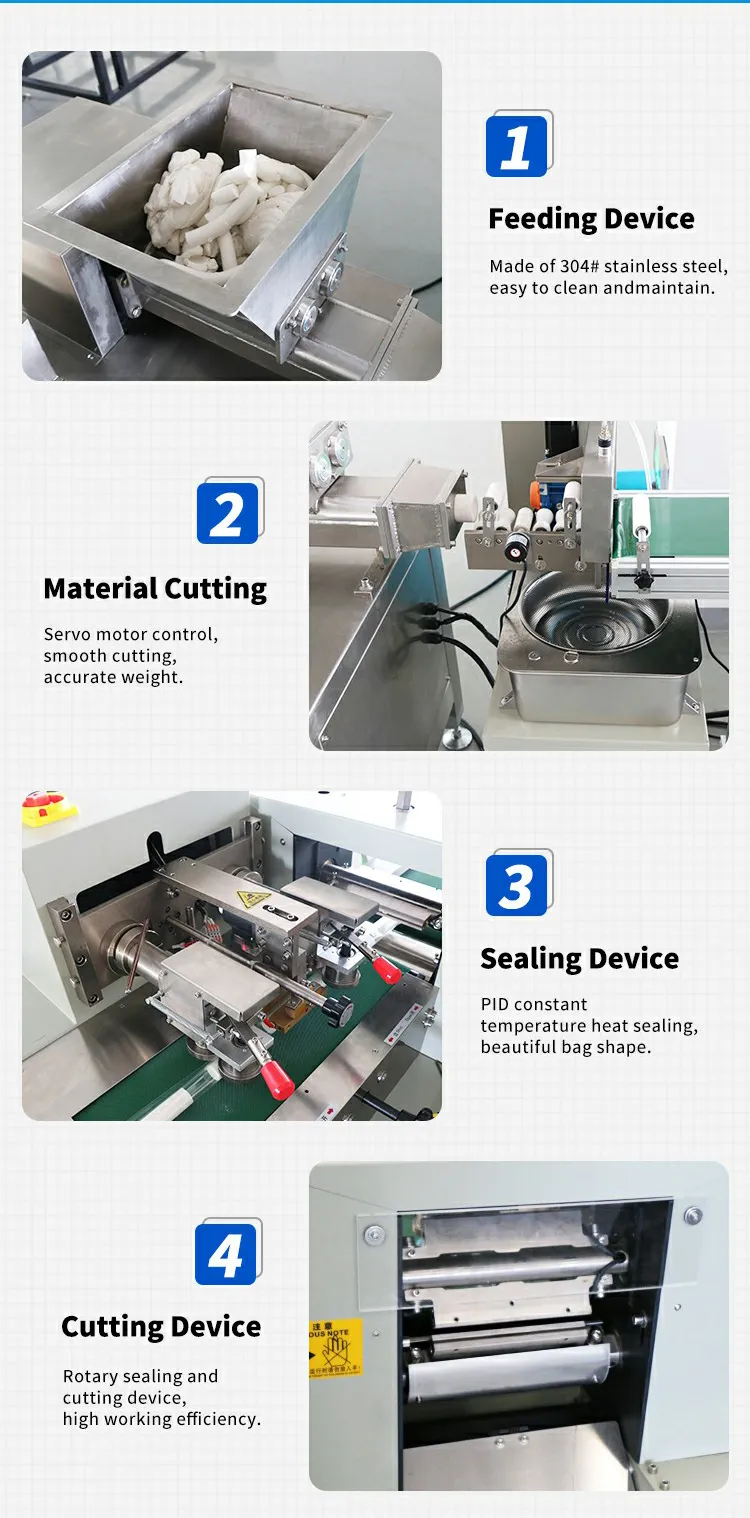
Le processus de flow packaging commence par le déroulement du film d'emballage d'un rouleau. Ce film est ensuite guidé à travers une série de colliers et de tubes de formage, qui le façonnent en un continu, tube creux. Au fur et à mesure que le produit entre dans ce tube, le machine d'emballage sous flux scelle simultanément le film sur toute sa longueur, créer une couture, et le coupe en paquets individuels. Les joints d'extrémité sont réalisés à chaud ou avec de la colle, en fonction des exigences du matériau et du produit. Cette intégration transparente du formage, remplissage, et le scellage souligne l'efficacité des machines d'emballage sous flux.
Avantages de la machine d'emballage Flow Wrap
Efficacité et productivité accrues
Les machines d’emballage Flow sont des modèles d’efficacité. Leur capacité à emballer des produits à des vitesses élevées (parfois jusqu'à des centaines d'unités par minute) se traduit par une productivité accrue et une réduction des coûts de main-d'œuvre.. Les opérations automatisées minimisent l’intervention humaine, réduisant ainsi les erreurs et les temps d'arrêt.
Polyvalence dans l'emballage de différents produits
L’une des caractéristiques les plus remarquables de l’emballage Flow Wrap est sa polyvalence.. Ces machines peuvent gérer une large gamme de produits, des produits de boulangerie délicats aux pièces industrielles robustes. Les paramètres réglables permettent personnalisation de la taille de l'emballage et du type de film, ce qui en fait une solution idéale pour industries diverses.
Rentabilité de l’emballage Flow Wrap
Les avantages économiques de la machine d'emballage à flux horizontal sont multiples. Gaspillage de matériaux réduit, coûts de main-d'œuvre réduits grâce à l'automatisation, et les opérations à grande vitesse contribuent à des économies de coûts significatives. En plus, la nature compacte de l'emballage Flow Wrap peut réduire les coûts d'expédition en optimisant l'utilisation de l'espace.
Durée de conservation prolongée des produits
L'emballage à flux horizontal joue un rôle central dans la prolongation de la durée de conservation des produits. Les joints hermétiques protègent contre la contamination, humidité, et infiltration d'oxygène, préserver la fraîcheur et la qualité des denrées périssables. Pour les denrées non périssables, il assure la longévité en protégeant contre les facteurs externes.
Visibilité et attrait du produit améliorés
Les films transparents utilisés dans les emballages Flow Wrap offrent une vue claire du produit à l'intérieur, améliorer son attrait visuel dans les rayons des magasins. Cette transparence peut être un argument de vente crucial, permettre aux consommateurs d'inspecter le produit avant l'achat. En outre, les opportunités de branding et d'étiquetage sur le film ajoutent au potentiel marketing.
Protection contre les facteurs externes
Les produits emballés dans un emballage Flow Wrap sont protégés contre divers facteurs externes tels que la poussière., saleté, et dommages mécaniques. Ceci est particulièrement vital pour les produits alimentaires et pharmaceutiques., où l'hygiène et la sécurité sont primordiales. Le scellement robuste garantit que le contenu reste non contaminé et intact tout au long de sa durée de conservation..
Application de la machine d'emballage à flux
Produits alimentaires
Dans l'industrie alimentaire, Les emballages Flow Wrap sont omniprésents. Il est utilisé pour emballer une gamme d'articles, notamment chocolats, des biscuits, pain, et des produits frais. La capacité de l’emballage à maintenir l’intégrité du produit et à prolonger sa durée de conservation est inestimable pour préserver la qualité et le goût des produits alimentaires..
Produits non alimentaires
Au-delà de la nourriture, Les emballages Flow Wrap sont largement utilisés dans les secteurs non alimentaires.. Articles tels que des composants électroniques, papeterie, et les produits de soins personnels bénéficient des qualités protectrices et esthétiques du flow wrap. La flexibilité dans la taille de l'emballage et le choix des matériaux le rend adapté à diverses applications.
Produits pharmaceutiques
L'industrie pharmaceutique exige des normes d'emballage strictes, et les machines de flow wrap livrent. Dispositifs médicaux et compléments de santé sont solidement emballés pour garantir qu’ils restent stériles et protégés de la contamination. La précision et la fiabilité du flow packaging sont essentielles au maintien de l’efficacité et de la sécurité des produits pharmaceutiques..
Matériaux les plus couramment utilisés pour l’emballage sous flux
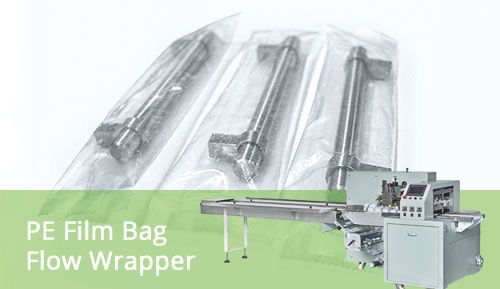
Polyéthylène (PE)
Le polyéthylène est un plastique largement utilisé dans les emballages flow wrap en raison de sa flexibilité et de sa durabilité.. Il offre une excellente résistance à l’humidité, ce qui le rend idéal pour les produits alimentaires. Les films PE sont également recyclables, s’aligner sur les efforts croissants de durabilité environnementale.
Polypropylène (PP)
Le polypropylène est apprécié pour sa clarté et sa résistance. Il constitue une bonne barrière contre l’humidité et résiste aux produits chimiques, ce qui le rend adapté à une gamme de produits, y compris les snacks, médicaments, et produits d'hygiène.
Polyester (ANIMAL DE COMPAGNIE)
Films polyester, ou PET, sont connus pour leur résistance et leur stabilité thermique exceptionnelles. Ils offrent une barrière élevée contre les gaz et l’humidité, ce qui les rend parfaits pour les produits nécessitant une durée de conservation prolongée. Le PET est également privilégié pour son excellente imprimabilité, qui valorise l'image de marque.
Cellophane
Cellophane, dérivé de la cellulose, est une alternative biodégradable aux plastiques synthétiques. Il offre une bonne transparence et est souvent utilisé pour emballer des produits de confiserie et de boulangerie.. Son caractère écologique est de plus en plus attractif dans un marché qui évolue vers des solutions d'emballage durables..
Stratifiés en aluminium
Les feuilles laminées combinent les propriétés barrières de l'aluminium avec la flexibilité des films plastiques.. Ils offrent une protection supérieure contre la lumière, humidité, et les gaz, ce qui les rend idéaux pour les produits sensibles à ces éléments, tels que les produits pharmaceutiques et certains produits alimentaires.
Stratifiés à base de papier
Les stratifiés à base de papier offrent une combinaison de la résistance et des propriétés barrières des films plastiques avec le respect de l'environnement du papier.. Ces stratifiés sont utilisés pour des produits qui nécessitent de la rigidité et un aspect traditionnel, comme les produits de boulangerie et les chocolats haut de gamme.
Chlorure de polyvinyle (PVC)
Le PVC est un plastique polyvalent utilisé dans les emballages flow wrap pour sa clarté et sa résistance.. Il offre une excellente protection contre les contaminants et est souvent utilisé pour emballer des dispositifs médicaux, jouets, et certains produits alimentaires. Cependant, les préoccupations environnementales incitent à s’orienter vers des alternatives plus durables.
Polyamide (Pennsylvanie)
Polyamide, ou du nylon, est utilisé pour sa résistance exceptionnelle et ses propriétés barrières. Il est souvent utilisé dans les applications d'emballage qui nécessitent une grande résistance à la perforation et une grande flexibilité., comme les viandes emballées sous vide et autres denrées périssables.
Choisir la bonne machine d'emballage Flow Wrap
Caractéristiques du produit
La nature du produit emballé dicte le choix de la machine de flow wrap. Facteurs tels que la taille du produit, forme, et la fragilité doit être prise en compte pour garantir un emballage optimal. Les machines avec paramètres réglables peuvent s'adapter à une variété de types de produits, améliorer leur polyvalence.
Vitesse et capacité de production
La vitesse de production est un facteur critique dans le choix d'une machine d'emballage sous flux. Les machines à grande vitesse sont essentielles pour les opérations à grande échelle, tandis que les petites entreprises peuvent opter pour des modèles avec un débit plus faible. La capacité de la machine doit s'aligner sur les objectifs de production pour maximiser l'efficacité.
Qualité et durabilité
Investir dans un produit de haute qualité, La machine d'emballage à flux durable garantit une fiabilité et des performances à long terme. Les machines fabriquées à partir de matériaux robustes et équipées d'une technologie de pointe peuvent résister aux rigueurs d'un fonctionnement continu, réduisant les temps d’arrêt et les coûts de maintenance.
Coût et retour sur investissement
Le coût initial d’une machine d’emballage sous flux est un facteur important à considérer, mais il doit être mis en balance avec le retour sur investissement potentiel (Retour sur investissement). Des facteurs tels qu’une productivité accrue, coûts de main d'œuvre réduits, et les économies de matière contribuent à la valeur globale de la machine. L'analyse de ces facteurs peut aider à prendre une décision d'achat éclairée.
Fabricants ou marques fiables d’emballages à flux
Choisir un fabricant ou une marque réputée de machines d'emballage alimentaire est crucial pour garantir la qualité et le support de la machine de flow wrap. Les entreprises ayant fait leurs preuves dans le secteur proposent des produits fiables et un service client complet.. Cela peut inclure une formation, entretien, et support technique, qui sont essentiels au bon fonctionnement.
Conclusion
L'emballage Flow Wrap représente le summum de l'efficacité et de la polyvalence dans l'industrie de l'emballage.. Sa capacité à accueillir une large gamme de produits, couplé à une rentabilité et une protection améliorée des produits, en fait un outil indispensable pour les fabricants modernes. En comprenant le fonctionnement, avantages, et choix de matériaux associés à l'emballage flow wrap, les entreprises peuvent exploiter tout son potentiel pour améliorer leurs opérations et leurs offres de produits. Alors que la demande de solutions d’emballage innovantes et durables continue de croître, l’emballage flow wrap reste à l’avant-garde, stimuler les progrès et établir de nouvelles normes dans l’industrie.

